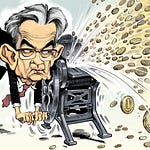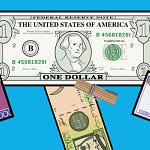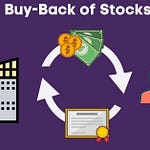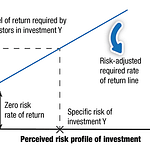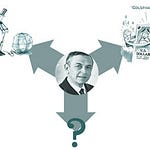So, what the heck is yield curve control? Because it sounds like something a Jedi would do, not a central bank.
As its name would suggest, YCC aims to control yields of government debt securities like Treasuries. In doing so, a central bank prevents those yields from getting too high, which keeps interest payments and refinancing costs down.
But before I get into the weeds, it will be helpful to briefly explain quantitative easing (QE) because YCC is essentially the next step in monetary easing policies when QE is no longer cutting it. I’ll spare you the long answer of what QE is and does, though you can check that long answer out in our article on QE and QT below, just know one of the main goals of QE is to lower interest rates.:
By lowering interest rates, central banks are attempting to encourage lending and thereby drive credit and overall economic activity. However, central banks are also attempting to lower the cost of rolling over their debt. When countries issue bonds, they are issuing debt with an interest rate. This is a fairly standard practice, but when a country accumulates too much debt, it can’t always afford for its interest on that debt to get too high.
Paying 5% interest on a few billion is no big deal for most countries, but paying 5% interest on trillions can consume all or even more than all of that country’s tax receipts, which is essentially the country’s income, so avoiding high interest rates is sometimes necessary to avoid a debt spiral or sovereign default.
Now, if QE, which usually consists of a pre-determined amount of money a country is willing to spend buying its own debt, isn’t enough to hold rates down, and higher rates are a serious threat to that country’s financial stability and solvency, YCC is the next batter up.
The key difference between YCC and QE is YCC commits to a specific interest rate, not a pre-determined amount of bond purchases, meaning YCC can, theoretically, lead to an infinite amount of bond buying. Under YCC, a central bank might commit to keeping interest rates at or below 1%, whereas under QE, it might simply commit to buying $30B in bonds each month, regardless of where that leaves interest rates. In other words, under YCC, the central bank will buy as many bonds as it has to to keep yields at or below the desired level, even if that means $30B bonds in one month and $100B the next month.
An example of this policy in action is Japan, which has been engaging in YCC since 2016, pinning their respective 10-year yield at around 25 basis points. If the yield rises beyond that level, the bank of Japan will print yen in the form of bank reserves and start buying those bonds until the yield gets back in line.
Interestingly enough, Japan’s goal with YCC was actually to generate inflation of 2%, something it has largely failed to do for the last couple decades because of a number of deflationary headwinds, most notably its demographics.
So, while it’s possible for YCC to have positive effects when fighting deflation, one, it is by no means a guarantee, and two, it is still a form of price suppression that can be at stark odds with natural market prices, especially if inflation gets out of hand.
Just bear in mind that any battle against a central bank that prints its own currency is all but impossible to win in the short-term, but a price cap constantly at odds with the market will inevitably lead to something going very wrong due to all that built up volatility.
With that in mind, one of the most important considerations around YCC is the government engaging in it, assuming its debt is denominated in its currency, has an unlimited balance sheet, so there is no limit to how many bank reserves it can print to defend a particular interest rate. The market can try to fight a central bank, but it probably won’t get anywhere until all that built-up volatility finds some sort of release valve, whether that’s the bond market, currency, or something else.
That said, when a country artificially pins its yields through YCC, the release valve is usually the value of its currency, meaning its currency can rapidly devalue to the point its economy becomes disorderly. A rapidly devaluing currency can lead to massive import inflation, complicate business expenses and investment, and lead to price distortions all throughout the economy, so the potential consequences of YCC-induced inflation can be rather extreme. If a central bank can keep inflation under control, YCC may not lead to serious problems, but an irrational or excessive use of YCC will likely scare a lot of investors out of that currency, thereby driving the inflation.
At that point, the central bank will have to make a very tough decision: let its interest rates rise and risk a nominal default on its debt (because don’t forget, it can always print its way out), or let its currency rapidly inflate by remaining steadfast in its YCC policy. Both scenarios are far from ideal, so any central bank caught in that dilemma would just be left choosing the lesser of two evils. Either way, it’s not a good place to be.
So, just to summarize, YCC is when a central bank commits itself to an unlimited amount of bond buying to pin its interest rates at a specific level. There can be a wide range of reasons this is done, but the main reasons are almost certainly QE wasn’t enough, that country is heavily indebted, and that country can’t afford to pay higher interest rates on that debt.







